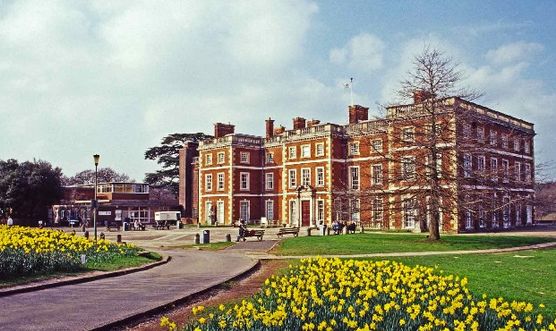Once upon a time I knew Trent Park quite well. In one of the periodic disaster periods of my life I took up running. I was living in Harringey, where although people ran to catch a bus or if they’d stolen someone’s purse, it wasn’t really the thing to do, back then.
Trent Park was pretty much the nearest big green place that wasn’t Finsbury Park and after saving some random girl from a flasher there (no, really. One morning on the way to work, since you ask) I didn’t much want to run there. Ditto Oak Hill Park where they dumped the body in Antonionionioni – I give up. Italian film-maker. Blow Up. Or so people said at the time.

It meant going all the way out past Cockfosters, up Cat Hill where John Betjeman once taught at a school on the top, up out into the open fields of Middlesex. Just before the boundless promise of the M25 you turned right into parkland. Which was. Hidden behind the screen of trees and picnic areas was an old house that was something to do with the University of Middlesex. It’s now going to be sold off as what used to be called Yuppie flats. But before that, like the equally unlikely Warwick Castle, Trent Park was briefly home to Rudolf Hess. Debate-ably.
Radio 4 seemed surprised to broadcast, along with Helen Lederer, that as I’d found out twenty years previously, during WW11 important German officers and Rudolf Hess were taken after capture to Trent Park, not for a walk or a run but for a chat. Obviously, they didn’t give much away. Until they were back in their cells, when they did, unaware that it was now possible to listen-in on conversations using this new-fangled microphonic technology.
Rudolf Hess was Hitler’s deputy. To say he was important was something of an understatement. According to the official record, one day he decided to steal an airplane and fly to Scotland to have a chat with the Duke of Hamilton, who he thought might have a chat with Lord Halifax, who might have a chat with Churchill, who might call the war off. Nothing implausible there, obviously. Nor in the fact that this act of unarguable treachery wasn’t repaid by the liquidation of the entire Hess family, which was pretty much standard practice in Germany at the time. Nothing personal.
The debate over Rudolf Hess was always whether or not it was him at all, not least that the British Army surgeon detailed to look after him in Spandau Prison where he spent the last half of his life was adamant that the man he was looking after simply didn’t have the injuries that Rudolf Hess had received in France in 1917. Notwithstanding too that the old man’s voice had deepened with age, according to his wife, who didn’t initially recognise the man she visited, an odd exception to the rule that old men’s voices generally get higher as they age. If, of course, it was the same man.
There was nothing at Trent Park to tell the visitor any of this. Nothing to tell the students there that some of the people who’d stayed there were if not the architects of the Final Solution, had at least helped it on its way.
None of that was visible at all when I ran there. I remember the dew on the grass. The pink of rabbits ears on a hill with the sun behind them. The long drag back down to Green Lanes. The headline about Steve Marriot burning to death the year before. The church hall where a friend once saw The Who, before they were famous. According to Wikipedia today, Blow Up wasn’t filmed in north London at all. History changes. Trent Park too.


